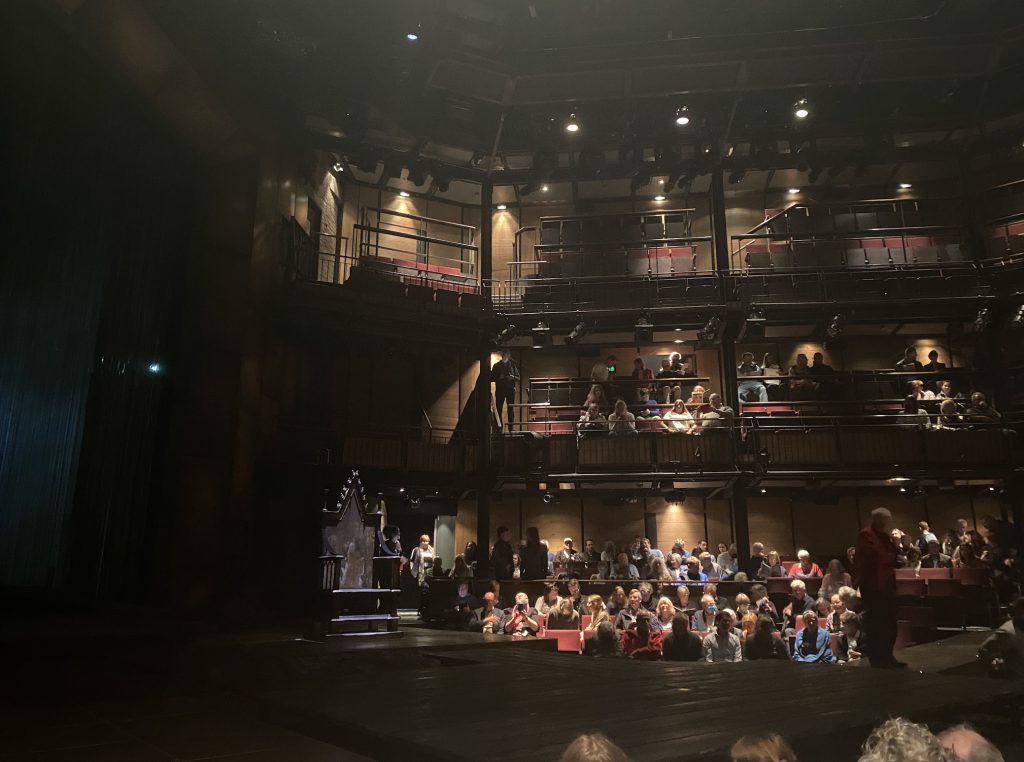London is one of the largest cities in the world. Whether you’ve been lucky enough to visit in person or if you’ve encounter London through some other medium (text, media, word of mouth, etc.), everybody has some preconceived notion of England’s capital. What people don’t see, however, is the lengths the city has gone to in order to disguise itself.
Disguise is everywhere in London, and to no surprise, everywhere in the world of Shakespeare. Before this trip, I would have described a disguise as something used to hide someone’s true identity as a form of deception. In this sense, I have found this during my travels. A fantastic (and probably the most relevant) example would be in the performance of Much Ado About Nothing. Though she was not aware of the despicable plan in place by Don John, Margaret, a handmaid to Hero, is disguised in Hero’s clothing whilst having an affair with one of Don John’s henchmen. This disguise works, fooling Hero’s fiancé into believing she had been unfaithful.

While this is an example of disguise in the most obvious sense of the word, I seem to keep stumbling on disguises wherever I turn. Disguise is embedded into the architecture, the history, and the very culture of London, both in the past and the present. In Westminster Abbey, there is concrete (or should I say marble?) evidence of monarchs covering up parts of the chapels and floors that they did not agree with, building over it with decorations that are meant to signify their greatness and regality. In the Tower of London, there are countless displays outlining the history of imprisonment, torture, and execution within the several different parts of the landscape. However, they are consistently downplayed and excused. I recall seeing multiple disclaimers stating that torture “technically” was not illegal, and because it was only used on a fraction of the prisoners, it should seem less horrific.
I don’t say all this to try and paint a bad picture of London. London is beautiful, and the rich history adds to the mystique of the city. Disguise is not unique to London; if I tried to count how many things are disguised in the United States, I would have to invent new numbers, or find a way to manually count to infinity. What struck me about the disguises I have encountered in London is that they’re subtle, so subtle that you’ll miss them if you so much as bat an eye. I never thought a disguise could be applied to architecture or a culture, just people and places. Safe to say, London will always keep you guessing!

